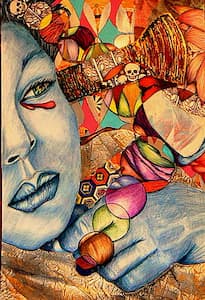
I hate the whole idea of stages of grief.
How about you? If you’re someone who is grieving, you already know there’s no such thing, but the idea that there are 5 stages has invaded our culture with an aura of truth I find deeply disturbing.
Even though I understand this simple, linear view of grief has massive appeal to anyone who is the least bit uncomfortable with death and grief…in other words all of us, it’s just not helpful to those who are grieving or those trying to support them.
The whole idea just adds to the lack of understanding our entire culture has around grief. As I was coming home from my daily walk today, I was thinking about how paradoxical it is that the more grief is studied, the more we’ve come to understand it takes a long time to grieve. The more we know, what is considered a normal amount of time becomes longer. At the same time the ‘stages of grief’ phenomenon has grabbed hold with no apparent end in sight.
That these two views are emerging simultaneously strikes me as odd. Maybe they have nothing to do with one another. Maybe recent research is making the whole idea of stages even more appealing because the more we know about grief the more incomprehensible it becomes. Maybe that’s why another bad idea, applying a diagnosis of complicated grief within 2 weeks following a death, has an appeal to the DSM committee.
We all want so desperately to contain and manage grief we’re missing the point entirely…grief will have its way with us no matter what we call it and no matter how much we want to think we can understand and contain it by putting it into the box called stages or the checklist of symptoms that would qualify anyone to be labeled with complicated grief so soon after having their life ripped apart.
Grief is complicated. There is nothing easy about it, and normal grief can look mighty crazy.
Let’s think about this for a moment. When someone we love dies, our lives are shattered…completely and utterly shattered. The people we love, dead and alive, weave themselves into the fabric and foundation of our lives. That’s what love’s about.
When someone dies, the warp and weft of our life is left with a big gaping hole in the center and everything surrounding it is pulled askew. Grief is about bridging the hole, integrating it into the whole and realigning all of the threads that make up the tapestry of our lives.
For more accurate grief support especially in the first few months, you might find How to Survive Your Grief helpful.
Photo Credit: COCOMARIPOSA
Elisabeth Kubler-Ross never intended for her to be taken as a linear progressing and was very put out with the people who did.
You’re absolutely right. Elisabeth Kubler-Ross understood grief. The stages as a linear process is certainly not what she meant. Unfortunately the culture has latched on to the linear interpretation. Even many mental health professionals have misunderstood the stages of grief. I find Worden’s 4 tasks much more useful and they don’t lend themselves to misinterpretation.
I’ve been on the grief journey 5 years and 8 months. I can sincerely say that the stages of grief must have been manufactured by someone who has not said good-bye to their child. The stages are never ever complete. I have visited them all in all kinds of arrangements, never linear, never organized, but helter skelter and back and forth.
A damaged tapestry is a very good picture of our hearts and lives. The tapestry will never be whole again, even if mended, the continuity has been compromised and the hole, while patched, will always stand out to the bereaved.